During the course of the disease in question, the correct shape and flexibility of the intervertebral discs is lost: their progressive deformation occurs. The distance between the vertebrae decreases, which leads to pinched nerves and pain. Of all parts of the spine, the lumbosacral is most often susceptible to these pathological changes.
Causes and signs of lumbar osteochondrosis: how does the disease manifest itself?
The disease in question occurs due to inadequate distribution of the load on the spine. This is the main reason for diagnosing lumbar osteochondrosis. There are many factors that can cause the appearance and development of this disease.
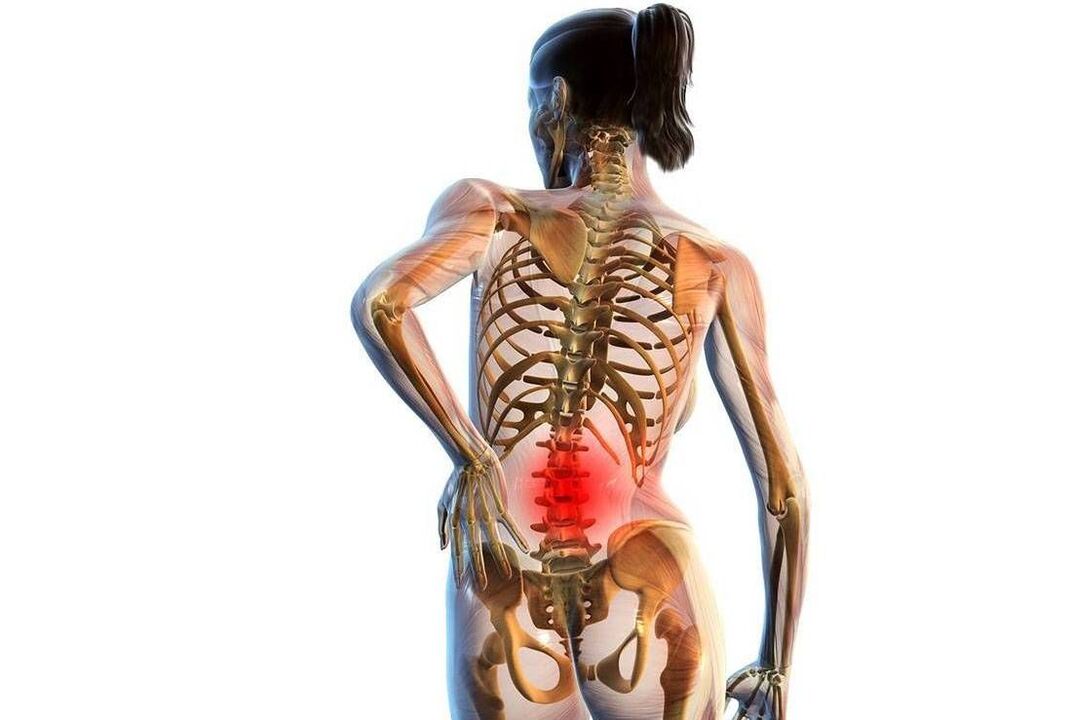
- Passive lifestyle. This includes people who lead a predominantly sedentary lifestyle. In a sitting position, the corset muscles relax, increasing the load on the lumbar spine.
- Inflammatory phenomena localized in the joints of the spine.
- Errors in the functioning of the endocrine system, hormonal imbalance.
- Serious infectious diseases affecting bones and joints (tuberculosis, osteomyelitis).
- Malfunctions of the gastrointestinal tract and heart.
- A lifestyle associated with heavy physical work (loaders, weight lifters, construction workers).
- Irregular posture, improper walking.
- Poor density of cartilaginous tissue (hereditary factor).
- Congenital pathologies linked to the structure of the spine/skeleton. Deviations in the functioning of the musculoskeletal system.
- Obesity.
- Unbalanced work and rest regime.
- Age. In people, after passing the age of 50, the intervertebral discs become less elastic and inactive.
- Chemical poisoning.
- Flat feet. With the correct structure of the foot, the load is absorbed during walking. If there is flat foot, the intervertebral discs receive the maximum load, which leads to their deformation and destruction.
- Back injury.
Signs of the disease in question are divided into three groups. Reflex signs (pain). They have different manifestations:
- Lumbago. It occurs following sudden movements (jumping high, running, coughing). This pain is paroxysmal in nature (low back pain). During this attack, the patient tilts his torso forward and remains in this position for a certain time: attempts to straighten up cause a new wave of pain. Low back pain occurs due to compression of the nerve roots.
- Lumbonia. Pain occurring in the lumbar region is increasing. Initially the patient feels some discomfort, which can turn into intense and regular pain. The cause of low back pain can be a sedentary lifestyle and excessive physical activity. Low back pain can develop against the background of low back pain.
- Sciatica. Pain sensations spread along the sciatic nerve. The main position is the lower extremities. This phenomenon occurs when the nerve roots of the spinal cord are pinched. If motor fibers are involved in the destructive process, the patient experiences muscle spasms and muscle weakness. Ignoring these symptoms can lead to muscle atrophy in the future.
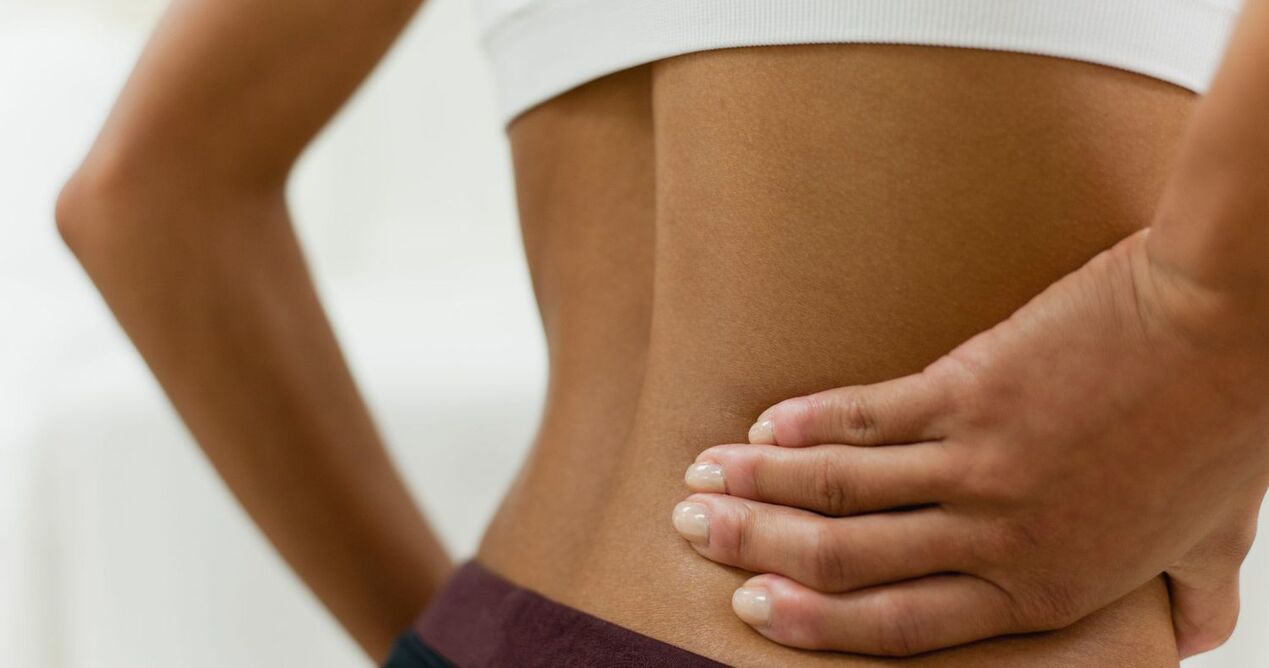
Radicular syndrome. Characterized by the following manifestations:
- the skin on the legs periodically loses sensitivity;
- the patient complains of excruciating pain in the lumbar region;
- disruptions in the sweating system occur.
Radiculovascular signs. They occur against the background of compression of blood vessels. The following complaints from the patient are noted:
- hot/cold in the lower limbs;
- slight tingling/increased pain in the feet;
- swelling (when the veins are compressed).
Lack of adequate treatment can result in spinal stroke, which can lead to partial/complete paralysis of the lower extremities, as well as severe dysfunction of the pelvic organs. Lumbar osteochondrosis negatively affects the structure of the vertebrae: over time they can shift. This violation can cause a series of negative phenomena.
- Malfunctions in the functioning of internal organs and the genitourinary system.
- Frequent tiredness.
- Weakness.
- Irritability.
Symptoms of lumbosacral osteochondrosis depending on the degree: how is the disease diagnosed?
According to the series and strength of the manifestation of clinical signs, the disease in question is divided into different degrees. The first is initial, the second degree is mild, the third is severe.
1st degree lumbar osteochondrosis.
Characterized by the main symptoms:
- Low back pain (low back pain), which occurs due to a rupture of the disc (intervertebral) capsule.
- Swelling of the tissues.
- Muscle spasm.
- Regular pain.

With grade 1 lumbar osteochondrosis, the patient may experience additional symptoms caused by compression of the blood vessels and nerve roots.
- Imitation of disorders associated with the functioning of the kidneys and gastrointestinal tract.
- Periodic abdominal pain occurring against the background of spasm of the abdominal muscles.
2nd degree lumbar osteochondrosis.
This degree of lumbar osteochondrosis is also characterized by the following manifestations:
- Regular pain (low back pain). The location of the pain, which can have variable intensity, is the lower back.
- Non-standard mobility in the joints of the spine. A tight bandage on the lower back can briefly improve the patient's general condition and reduce pain.
- Malfunctions (not always) of the internal organs. In some cases, a patient with lumbar osteochondrosis may experience bronchial asthma and errors in the functioning of the biliary/urinary tract.
- Pain in the lower limbs that goes in the direction of the sciatic nerve.
3rd degree lumbar osteochondrosis.
At this stage of the disease, surgical treatment is necessary, otherwise paralysis and death may occur. The 3rd degree of lumbar osteochondrosis has its own peculiarities.
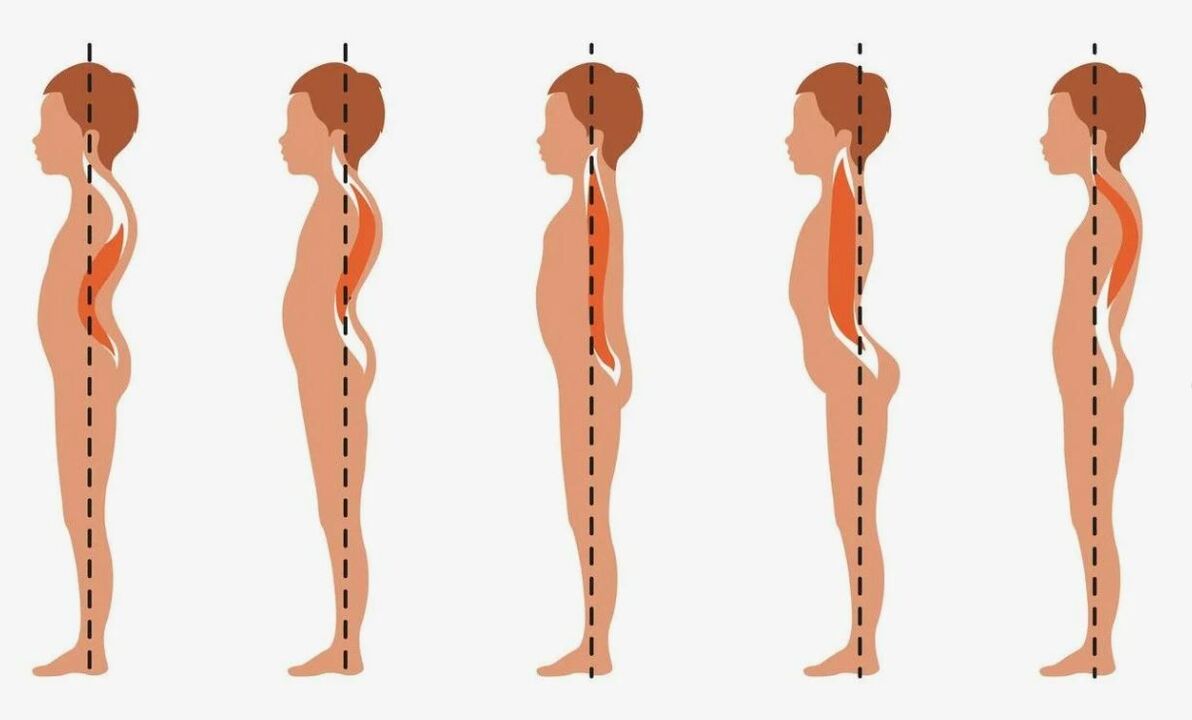
- Spinal deformity: curvature to the right/left (scoliosis); forward bowing (lordosis), bowing of the lumbar spine (kyphosis).
- Constant, severe, acute pain that is felt at the slightest physical activity (change of position, coughing, sneezing).
- Swelling of muscle tissue, ligaments.
- Periodic/regular loss of sensation in the lower body (lower back, legs, feet).
- Malfunctions of the genitourinary system.
Methods of treatment for lumbar osteochondrosis
The choice of therapeutic tactics for the disease in question will depend on the degree of osteochondrosis, the presence of additional diseases, the general condition of the patient and other factors that will necessarily be taken into account by the attending physician.
There are 2 important points that guide any doctor when prescribing treatment.
- To eliminate osteochondrosis of the lumbar region, an integrated approach is needed.
- The treatment measures (intensity, duration) will be determined by the level of abandonment of the pathology in question.
Pharmacological treatment of lumbosacral osteochondrosis - effective drugs
Every year, scientists develop new drugs that help relieve the symptoms of lumbar osteochondrosis. The medication list below is not a standard and may change. However, today doctors often use certain drugs to combat the manifestations of this disease.
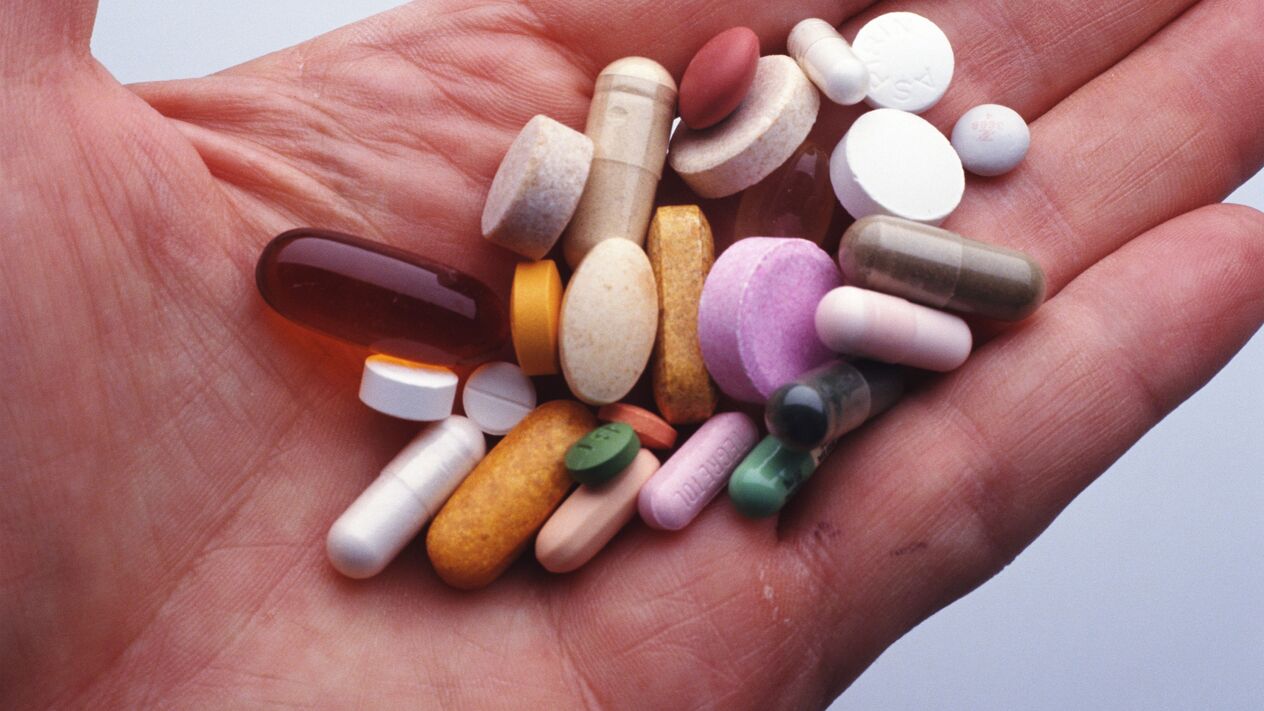
- Chondroprotectors. They stop the destructive processes in the cartilaginous tissues of the spine that occur in the initial stage of the disease.
- Anti-inflammatory drugs (non-steroidal). Used for the treatment of 2nd degree lumbosacral osteochondrosis. This group of drugs can be used in the form of injections (intramuscular), tablets, ointments, rectal suppositories, capsules and solutions. In case of exacerbation of the disease, the patient may be prescribed injections (16 mg/day)
- Muscle relaxants. Helps eliminate discomfort caused by increased muscle tone.
- Vasodilators. It helps improve blood circulation, preventing stagnation, minimizing the risk of infection in the body.
- Local anaesthetics. In case of severe and constant pain, the anesthetist performs a block. A solution is injected into the painful area using a special needle. The pain disappears immediately and does not bother for several weeks. Such blocking should be used only in extreme cases: it has many negative consequences.
- Vitamin and mineral complexes. Often prescribed to elderly patients, to increase the strength of tendons and ligaments.
Massage for lumbar osteochondrosis of the lumbosacral region
This method of treatment will be useful in the subacute stage of the disease in question. Through massage it is possible to eliminate pain, eliminate tension and muscle hardening.
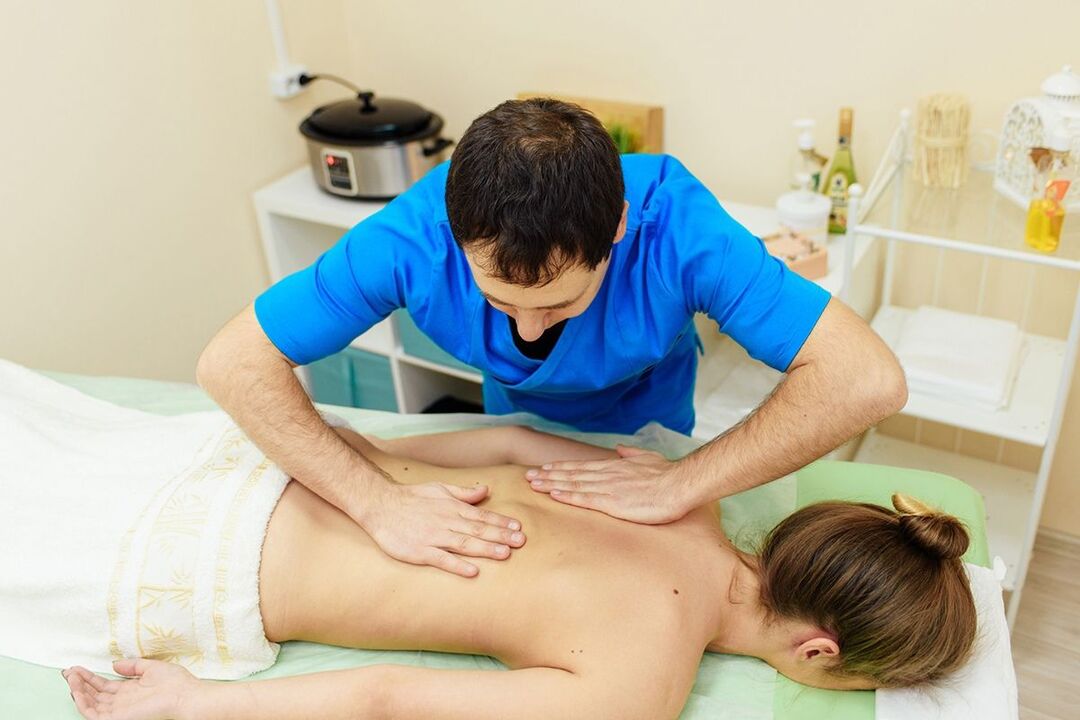
The massage should be performed on a healthy (unaffected! ) area. During the procedure, the patient is placed on a flat, hard couch on his stomach. Place a pillow/pillow under your belly. You also need to make sure that the patient's legs are raised (45 degrees). The forehead should rest on a hard surface.
To perform a massage, it is better to use special products (oils, creams, lotions) that have warming properties, or to conduct the session immediately after spa procedures (bath, sauna). Today there are many massage techniques, we highlight the main ones:
- Caress. There are several types of strokes: hook-shaped, transverse flat, fan-shaped, ending with symmetrical strokes in the area of the sternum muscles.
- Squeezing. Performed in combination with caresses. This massage technique ensures muscle stretching.
- Knead.
- Shake.
- Shredding. Often used to improve the functioning of tendons, ligaments and joints.
- Punctual impact. Not all massage therapists are able to perform the procedure using the acupressure technique.
Therapeutic gymnastics or physical therapy for lumbar osteochondrosis: a set of exercises for the lumbosacral spine on video.
The entire complex of physical exercises used in the diagnosis of lumbar osteochondrosis should help increase the mobility of the lumbar region.
Therapeutic gymnastics will not be effective if the exercises are performed occasionally. The fundamental principle of physical therapy is regularity. Constant performance of a certain set of exercises will help eliminate destructive processes in the intervertebral joints. It is forbidden to carry out physical therapy in the presence of acute pain. In case of severe pain, doctors recommend bed rest and the use of special corsets. When the pain subsides, you can try therapeutic exercises.
Physiotherapy for lumbar osteochondrosis
This conservative treatment method is one of the most effective. However, to achieve the desired result you need to spend a lot of time. Using different types of physical therapy at the same time helps speed up recovery. This treatment method has many contraindications that cannot be ignored. Physiotherapy is often prescribed to children, pregnant women, nursing mothers and elderly patients.
It is prohibited to use physiotherapy in the following cases:
- cancer;
- acute stages of osteochondrosis;
- serious disruptions in the functioning of the central nervous system;
- injuries in the area where physiotherapy should be performed.
Today, a number of physiotherapeutic procedures have become popular in the treatment of lumbar osteochondrosis.
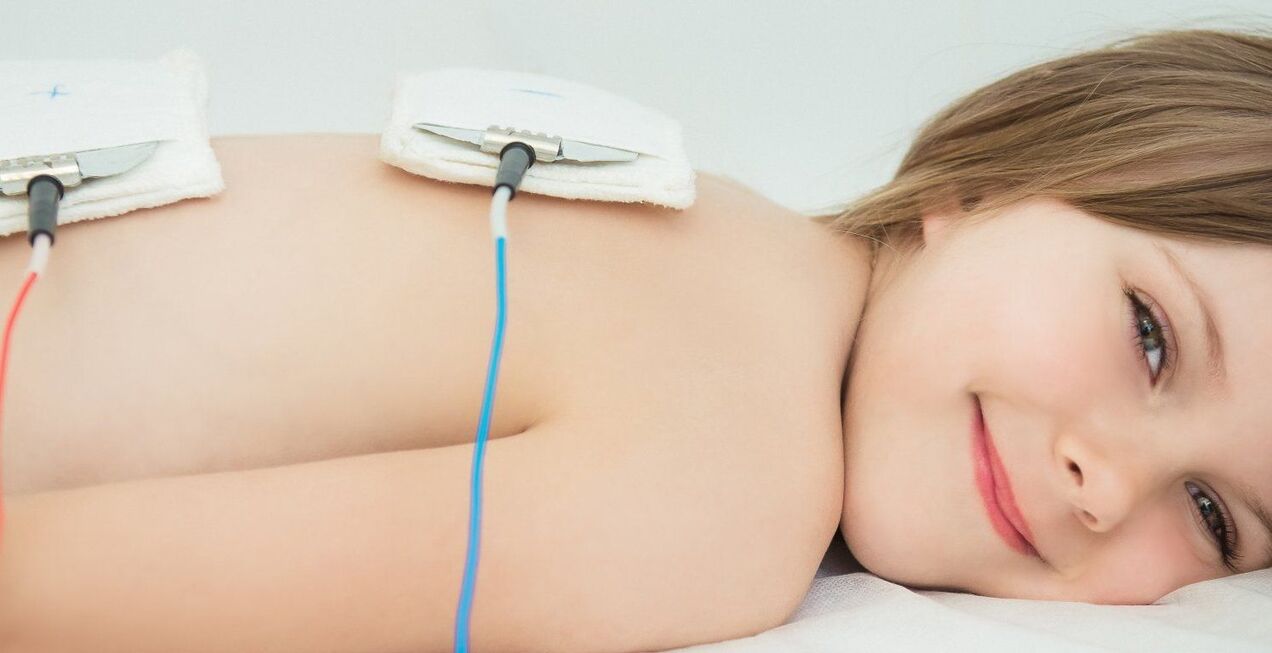
- Ultraviolet radiation. The pathological area is exposed to heat, which helps to improve blood supply, eliminate spasms and eliminate pain.
- Magnetotherapy, electrophoresis. The application of the method involves exposing the painful area of the spine to a magnetic/electric field. Through this effect it is possible to re-establish the body's metabolic processes, eliminate (totally/partially) inflammatory phenomena and accelerate recovery.
- Laser therapy. The condition of the affected spinal roots is significantly improved due to the influence of helium-neon emitters on them.
- Balneotherapy. The main component used to perform the physical procedure in question is therapeutic mud and mineral waters.
- Detensor therapy (mechanical stretching of the spine). Relevant for severe back pain.
Folk remedies for lumbar osteochondrosis
This method of treatment involves the use of ointments, rubs and compresses containing medicinal plants. Such remedies help reduce inflammation and eliminate pain. It is advisable to use folk remedies in the treatment of lumbar osteochondrosis with caution: an allergic reaction may occur/develop.
Often, in the fight against the disease, rubbing and compresses are used:
- Chilli tincture: to rub the painful areas of the lower back. To prepare the drug you need to mix 1 tbsp. vodka (diluted medical alcohol), 20-25 gr. dry ground red pepper. It is necessary to leave these ingredients to infuse (stirring occasionally) for 5-7 days.
- Camphor and mustard: for daily rubbing before bed. To prepare the product, mix mustard powder (50 g), camphor alcohol (50 ml), medical alcohol (90-100 ml), beaten egg whites (3 pieces). After thorough mixing, you should get a liquid ointment.
- Honey and aloe: for compresses on the lower back (2 times a day). To prepare this product you need to use honey (100 ml), diluted medical alcohol (150 ml), aloe juice (50 ml). Before use, this mixture should stand for 10-12 hours.
- Horseradish root and alcohol: to rub the affected area of the back. To prepare this product, mix horseradish root juice and medical alcohol in equal proportions. After rubbing, wrap the treated area.
- Garlic juice and pork fat (1: 2): rub into painful areas of the lower back.
- Thick-veined peeled cabbage leaf: for compresses. Before application, the cabbage leaf should be soaked in warm water (no more than 60 C). You can fix the leaf on your lower back using a bandage/gauze. After changing the color of the leaves, the procedure can be repeated.

Prevention of lumbar osteochondrosis
Prevention of the disease in question involves a whole series of measures.
Appropriate nutrition. The diet should be balanced and low in calories. It is not recommended to consume meals more than 6 times a day. Certain foods should predominate in your daily diet.
- Fish (sea).
- Vegetable fats (olive, linseed oil).
- Dairy products with a minimum content of dyes and sugar.
- Dishes containing gelatin (jellied meat, jelly).
- Animal cartilage (can be used for the preparation of first courses).
- Fresh fruit, vegetables.
- Green.
- Mineral water.
It will be useful to take vitamin and mineral complexes (1-2 times a year).
Active lifestyle
- I swim.
- Daily walks.
- Gymnastic exercises (also suitable for pregnant women).
Performing simple physical exercises (15-20 minutes a day) aimed at strengthening the back muscles.
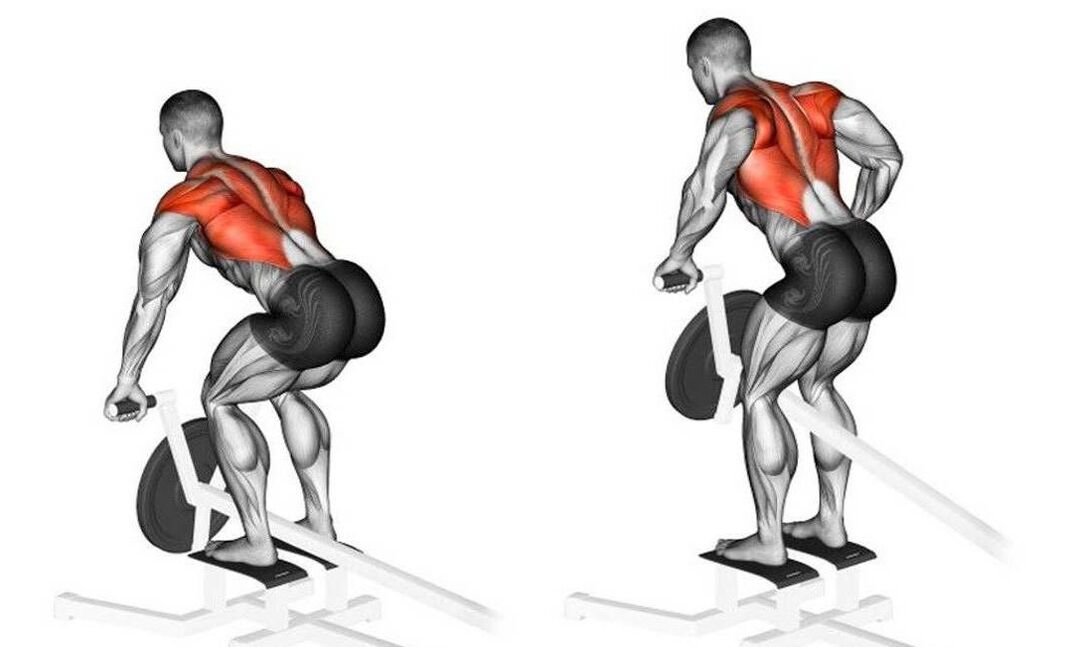
Lumbar osteochondrosis can pass from the acute to the chronic stage, which means an annual expense for massages, pain-relieving injections and warming ointments. If you don't treat all this, the consequences can be very sad, even paralysis or death!


























